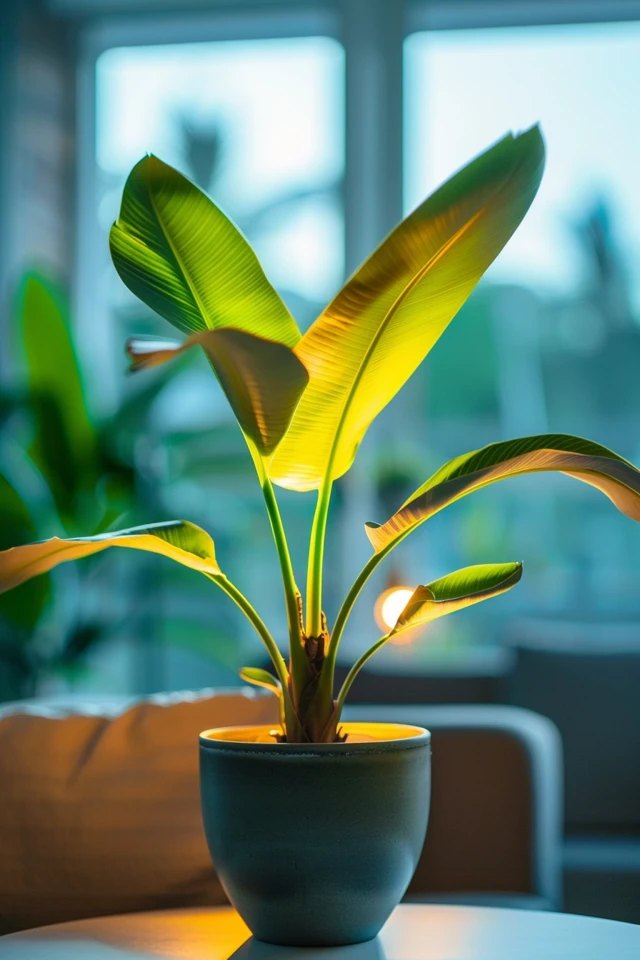Pruning a banana tree is essential for promoting healthy growth and maximizing its potential. Whether you’re a gardening enthusiast or simply have a banana tree in your backyard, understanding the proper pruning techniques is crucial. In this article, I will share valuable tips and advice on banana tree care and maintenance to ensure your tree thrives and produces abundant, high-quality fruit.
Key Takeaways:
- Regularly pruning banana trees promotes healthy growth and maximizes fruit production.
- Use a sharp knife or machete to cut offshoots to the ground and scatter them around the mother stalk as mulch.
- Remove leaves that shade or rub against developing bananas and cut off dead leaves to encourage new growth.
- Prune during the active growing season and after the fruit is harvested, avoiding pruning the mother plant before it produces bananas.
- Following expert advice on banana tree pruning techniques leads to healthier trees, increased yields, and more beautiful plants.

Importance of Pruning Banana Trees for Healthy Growth
Pruning banana trees is crucial for promoting healthy growth and ensuring optimal fruit production. By removing offshoots and excess suckers, the main stalk and one offshoot can receive the necessary resources of water and nutrients, resulting in larger and higher-quality fruit.
Pruning also offers additional benefits:
- Prevents overcrowding: Pruning helps to avoid overcrowding of the banana plant, allowing each stalk to have enough space and sunlight to thrive.
- Improves air circulation: Proper pruning opens up the plant and improves air circulation, reducing the risk of fungal diseases and improving overall plant health.
- Reduces pests and diseases: By regularly pruning banana trees, you can remove sections of the plant that are vulnerable to pests or infected by diseases.
In addition to removing offshoots and suckers, there are other pruning practices that contribute to healthy growth:
- Removing dead leaves: Pruning dead or dying leaves allows the plant to focus its energy on producing new growth and healthy fruit.
- Cutting back flowering stalks: After the fruit is harvested, cutting back the flowering stalks prevents the plant from expending unnecessary energy on non-productive parts and encourages new growth for the next crop.
By following expert advice on banana tree pruning techniques, gardeners can achieve healthier trees, increased yields, and more beautiful plants.

When to Prune Banana Trees and Best Pruning Techniques
Pruning plays a crucial role in the care and maintenance of banana trees. Knowing when to prune and the best techniques to use can ensure optimal growth and fruit production. Here, I will guide you through a step-by-step process to prune your banana tree effectively.
When to Prune Banana Trees
The ideal time to prune a banana tree is during the active growing season and after the fruit has been harvested. Pruning too early or too late can harm the plant’s health and yield. Typically, spring is the active growing season, characterized by the plant’s vigorous growth. Pruning during this period enables the tree to heal quickly and promotes the growth of new foliage.
Best Pruning Techniques for Banana Trees
Here are the best pruning techniques to follow:
- Remove any damaged or diseased tissue: Begin by identifying and removing any frost-damaged or diseased parts of the tree. This will prevent the spread of diseases and encourage overall tree health.
- Thin out dense areas: Improve air circulation within the tree by thinning out areas where the branches are densely packed. This allows sunlight and air to reach all parts of the tree, reducing the risk of fungal diseases.
- Trim dead leaves: Cut the dead leaves close to the main stalk, making sure to use sharp and clean tools. This will help maintain the tree’s appearance and prevent any potential pests from hiding in the decaying foliage.
- Prune the main stem: Using a clean and sharp knife, prune the main stem by cutting about 1 inch from the trunk. This encourages new growth and allows the tree to direct its resources to producing fruit.
- Remove excess suckers: If any suckers have sprouted away from the main plant, remove them. Leave only one or two strong suckers that will produce next year’s crop.
Remember, pruning should always be done with care and precision. By following these best pruning techniques, you’ll help your banana tree thrive and yield delicious fruits for years to come.

Conclusion
Pruning banana trees is vital for their care and maintenance, ultimately leading to optimal growth and fruitful harvests. By implementing proper pruning techniques, such as removing offshoots, thinning suckers, trimming flowering stalks, and cutting back after the harvest, banana plants can flourish and produce larger, higher-quality fruit.
Regular pruning not only promotes healthy growth but also enhances air circulation within the plant, reduces the risk of diseases and pests, and ensures efficient resource utilization. It is crucial to conduct pruning during the active growing season and after the fruit is harvested, being mindful not to prune the mother plant before it produces bananas.
To achieve the best results, it is recommended to follow expert advice on banana tree pruning. By doing so, gardeners can safeguard the long-term health and success of their prized banana trees. Remember, proper pruning techniques are key to maintaining the vitality and productivity of these incredible plants.

